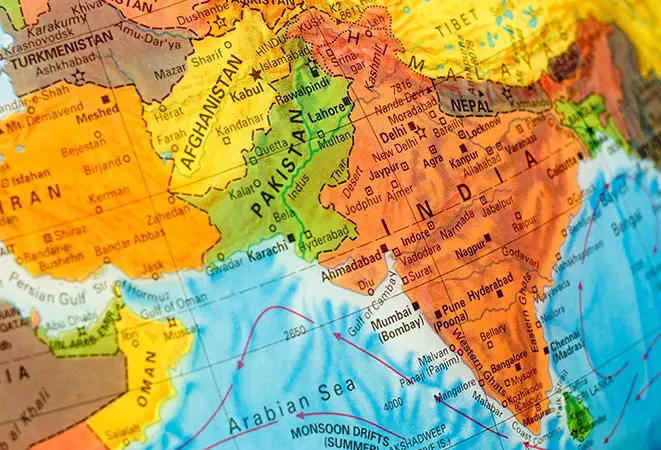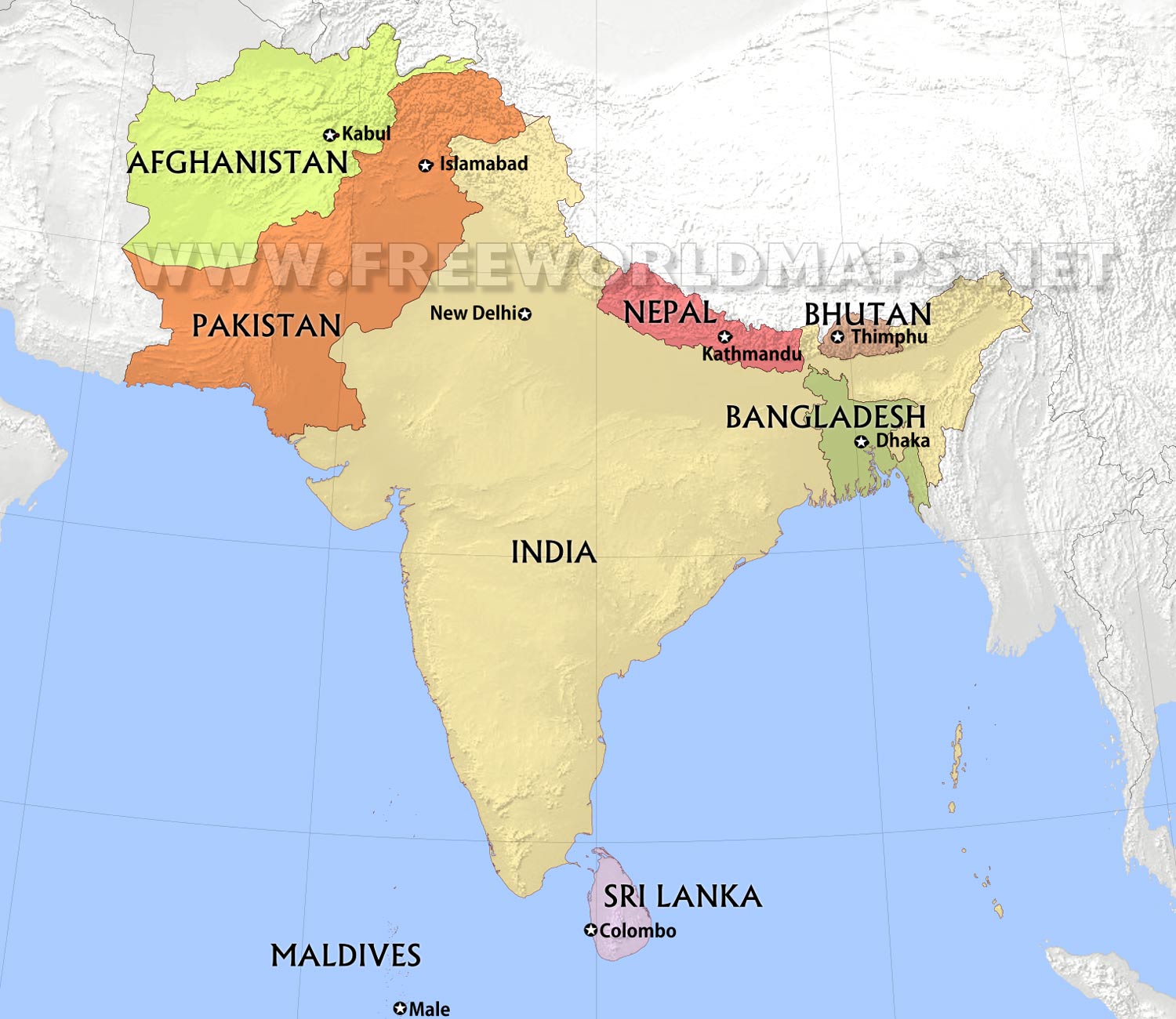South Asia, a region located in the southern part of the Asian continent, is home to a complex web of geopolitical dynamics that shape the political, economic, and security landscape of the region. In this article, we will delve into the intricacies of South Asian geopolitics, exploring the regional politics, strategic interests, security challenges, and the influence of major powers in the region. By examining the multifaceted aspects of South Asian geopolitics, we can gain a comprehensive understanding of the opportunities and obstacles faced by the countries in this dynamic region.
I. Introduction
South Asia encompasses countries such as India, Pakistan, Bangladesh, Sri Lanka, Nepal, Bhutan, and the Maldives. With a population of over 1.8 billion people, South Asia is a region of significant global importance. The geopolitical dynamics in South Asia are shaped by historical factors, cultural diversity, and geopolitical rivalries. Understanding these dynamics is crucial for comprehending the region’s current political landscape and its implications for international relations.
II. Geopolitical Dynamics in South Asia
To understand the complexities of South Asian geopolitics, it is essential to consider the historical context. The region’s history is marked by the influence of colonial powers and the subsequent struggles for independence and decolonization. The diversity of South Asian countries, including variations in language, religion, and ethnicity, adds another layer of complexity to the geopolitical dynamics.
Religion and culture also play a significant role in shaping South Asian geopolitics. With Hinduism, Islam, Buddhism, and Sikhism being prominent religions in the region, religious identity often intersects with political aspirations and nationalistic movements. Additionally, the concepts of nationalism and identity have been instrumental in shaping the region’s political landscape.
III. Political Landscape in South Asia
The political landscape of South Asia is characterized by a mix of democratic systems, authoritarian regimes, and transitional governments. Democratic systems have been established in countries like India, Bangladesh, and Nepal, albeit with their own challenges. Political parties play a crucial role in shaping governance and public policies. However, corruption, weak institutions, and governance issues pose significant obstacles to political stability and effective governance in the region.
Ethnic and sectarian conflicts also contribute to the political landscape of South Asia. For instance, in Sri Lanka, the Tamil-Sinhalese conflict has had a lasting impact on the country’s political dynamics. Similarly, sectarian tensions between different Muslim sects have influenced the political landscape in Pakistan.
IV. Regional Politics in South Asia
South Asia is marked by both bilateral and multilateral relationships among its countries. The South Asian Association for Regional Cooperation (SAARC) is a significant platform for fostering regional cooperation and addressing common challenges. However, regional politics in South Asia is often marred by disputes and conflicts between neighboring countries.
Border disputes, such as the Kashmir issue between India and Pakistan or the territorial disputes between India and China, contribute to tensions and rivalry in the region. Peace processes and diplomatic efforts are ongoing to resolve these conflicts and promote stability. However, progress has been slow, and mistrust often hampers the regional cooperation needed to address shared challenges effectively.
V. Strategic Interests and Security Challenges

South Asia’s strategic location and resources make it an area of interest for major powers around the world. India, as the largest country in the region, holds a dominant position and seeks to assert its influence. China’s increasing presence in South Asia, driven by its economic and strategic interests, has raised concerns among other regional players and major powers like the United States.
Arms race and military capabilities in South Asia have been a cause for concern. Both India and Pakistan possess nuclear weapons, and the region has witnessed several conflicts and border skirmishes. Cross-border terrorism, insurgencies, and non-traditional security threats further complicate the security landscape, requiring a comprehensive approach to address these challenges effectively.
VI. Economic Integration and Cooperation
Economic integration and cooperation are essential for fostering stability and development in South Asia. The region has immense potential for regional trade, given its large population and diverse markets. Efforts are being made to promote economic integration through initiatives like the South Asian Free Trade Area (SAFTA) and infrastructure development projects such as the China-Pakistan Economic Corridor (CPEC).
However, achieving meaningful economic cooperation in South Asia is not without challenges. Political tensions, trade barriers, and non-tariff barriers hinder the realization of the region’s economic potential. Resolving these issues and promoting a conducive environment for trade and investment is crucial for fostering regional economic integration.
VII. South Asian Security Architecture
South Asia’s security architecture relies on regional security organizations, such as the South Asian Association for Regional Cooperation (SAARC), to address security challenges and promote stability. Additionally, peacekeeping efforts and conflict resolution mechanisms play a crucial role in managing regional conflicts and reducing tensions. Military alliances and partnerships are also part of the security landscape, with countries in the region aligning themselves with major powers.
The presence of nuclear weapons in the region adds an extra layer of complexity to the security dynamics. Deterrence, nuclear doctrines, and confidence-building measures are essential components of South Asia’s security architecture. However, ensuring a stable security framework that addresses the concerns of all countries in the region remains a significant challenge.
VIII. Influence of Major Powers
South Asia’s geopolitical dynamics are significantly influenced by major powers such as India, China, the United States, and Russia. India’s dominant role in the region, driven by its size, economy, and military capabilities, has a profound impact on the political and security landscape. China’s increasing economic investments and infrastructure projects in South Asia, particularly through its Belt and Road Initiative (BRI), have raised questions about its strategic intentions.
The United States and Western powers maintain interests in South Asia due to regional stability, counterterrorism efforts, and economic opportunities. Russia, historically involved in the region, maintains partnerships with various South Asian countries. The interactions and rivalries between these major powers shape the geopolitical dynamics and influence the policies of South Asian countries.
IX. Conclusion
In conclusion, South Asian geopolitics is a complex and dynamic field that encompasses diverse political, economic, and security aspects. The region’s historical context, political landscape, regional politics, and security challenges all contribute to its intricate dynamics. Major powers’ influence, economic integration efforts, and the role of regional organizations are critical factors in shaping South Asia’s future.
To ensure a peaceful and prosperous South Asia, addressing security challenges, promoting regional cooperation, and fostering economic integration are paramount. By navigating the geopolitical dynamics effectively, South Asian countries can harness their potential and build a stable and prosperous region.
FAQs (Frequently Asked Questions)
1. What countries are included in South Asia? South Asia includes countries such as India, Pakistan, Bangladesh, Sri Lanka, Nepal, Bhutan, and the Maldives.
2. How does religion influence South Asian geopolitics? Religion plays a significant role in South Asian geopolitics, as it intersects with political aspirations, nationalistic movements, and identity.
3. What are the major security challenges in South Asia? Security challenges in South Asia include border disputes, cross-border terrorism, insurgencies, and non-traditional security threats.
4. How do major powers influence South Asian geopolitics? Major powers like India, China, the United States, and Russia exert influence in South Asia through various means, including economic investments, military partnerships, and diplomatic engagement.
5. What is the role of regional organizations in South Asian geopolitics? Regional organizations like SAARC (South Asian Association for Regional Cooperation) play a crucial role in promoting regional cooperation, addressing common challenges, and fostering stability in South Asia.
The Shifting Power Dynamics in the Middle East: Analyzing the Role of Key Players

[…] South Asian Geopolitics: Understanding the Dynamics and Challenges […]
[…] of the world and their strategic objectives. But, understanding the intricate nature of power structures requires an approach that is more nuanced. Utilizing an interconnected lens to geopolitics we can […]
[…] South Asian Geopolitics: Understanding the Dynamics and Challenges […]